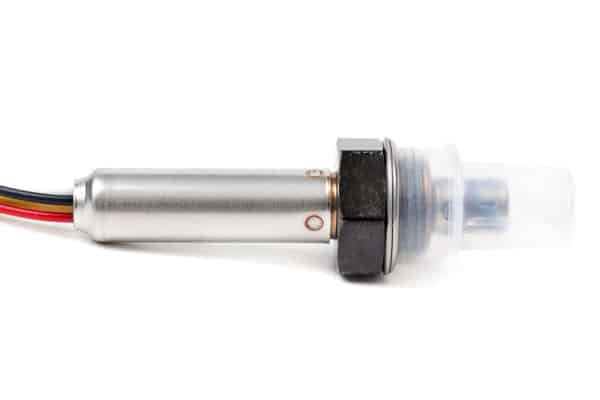Last Updated on January 21, 2025 by Nate Schnell
If you’re exploring DIY automotive maintenance, cleaning your oxygen sensor (O2 sensor) is a practical and rewarding task. This critical component of your car’s emissions system helps regulate engine performance, fuel efficiency, and emissions output. Over time, the O2 sensor can become contaminated with debris and buildup, leading to reduced efficiency and potential long-term engine issues. The good news? With the right tools and guidance, you can clean your O2 sensor and restore its functionality.
What Is an O2 Sensor and Why Is It Important?
An O2 sensor monitors the oxygen levels in your vehicle’s exhaust gases. This data helps your car’s engine control module (ECM) maintain the ideal air-fuel ratio for efficient combustion. A well-functioning O2 sensor ensures your engine operates efficiently, reduces emissions, and optimizes fuel economy. However, when an O2 sensor becomes dirty or faulty, it can result in:
- Reduced fuel efficiency
- Increased emissions
- Rough idling
- Engine misfires
- Accelerated wear on engine components
Cleaning your O2 sensor can prevent these problems and save you from costly repairs.
Signs Your O2 Sensor Needs Cleaning
A contaminated O2 sensor can exhibit several warning signs. If you notice any of the following, it may be time for a thorough cleaning:
- Illuminated Check Engine Light: This is often the first indicator of a dirty or failing O2 sensor.
- Poor Gas Mileage: A dirty sensor can lead to an incorrect air-fuel mixture, causing the engine to burn more fuel.
- Rough Idling or Misfiring: Inconsistent oxygen readings disrupt engine performance.
- Smell of Fuel: Unburned fuel may exit through the exhaust system due to an improper air-fuel ratio.
How Does an O2 Sensor Become Dirty?
O2 sensors are exposed to exhaust gases, making them vulnerable to contamination. Common culprits include:
- Carbon Deposits: Soot from incomplete combustion accumulates on the sensor.
- Fuel Residue: Unburned fuel can clog the sensor.
- Exhaust Contaminants: Hydrocarbons, nitrogen oxides, and carbon monoxide from the exhaust can leave deposits on the sensor’s surface.
Tools and Materials You’ll Need
Before starting, gather the necessary tools and materials to ensure a smooth process:
- Safety goggles and gloves
- Car jack and jack stands
- Hexagonal O2 sensor removal tool or a wrench
- WD-40 or a similar lubricant
- Plastic bowl
- Gasoline or catalytic converter cleaner
- Compressed air or shop towels
Step-by-Step Guide to Cleaning Your O2 Sensor
1. Locate the O2 Sensor
Consult your vehicle’s owner’s manual to identify the location of the O2 sensors. Most cars have at least two sensors: an upstream sensor near the exhaust manifold and a downstream sensor near or after the catalytic converter. Once identified, use a car jack to safely lift the vehicle and locate the sensor.
2. Prepare the Vehicle
Ensure the engine is off and has cooled completely before attempting any work. Removing a sensor from a hot engine can be dangerous.
3. Remove the O2 Sensor
Spray the base of the sensor with WD-40 or a similar lubricant to loosen it. Wait 10-15 minutes, then use a hexagonal O2 sensor removal tool or wrench to unscrew and remove the sensor. Place the sensor on a clean, dust-free surface.
4. Clean the Sensor
Fill a plastic bowl with gasoline or catalytic converter cleaner and submerge the O2 sensor. Allow it to soak overnight to dissolve buildup and contaminants. Avoid submerging the electrical connector to prevent damage.
5. Dry the Sensor
After soaking, remove the sensor and gently scrub it with a wire brush to remove remaining debris. Use compressed air or shop towels to dry the sensor completely before reinstalling it.
6. Reinstall the O2 Sensor
Carefully screw the cleaned sensor back into its original position. Use the removal tool to tighten it securely, but avoid over-tightening. Reconnect any electrical connectors and lower the vehicle safely.
How to Maintain a Clean O2 Sensor
Regular maintenance can extend the lifespan of your O2 sensor and prevent the need for frequent cleanings. Here are some tips:
- Use high-quality fuel to minimize deposits.
- Keep your engine well-maintained with regular tune-ups.
- Address any engine performance issues promptly to reduce exhaust contaminants.
When to Replace Instead of Clean
While cleaning can restore functionality in many cases, some O2 sensors may be beyond repair. If cleaning doesn’t resolve performance issues or if the sensor is physically damaged, replacement is necessary. Most O2 sensors have a lifespan of 60,000 to 90,000 miles, depending on the make and model of your vehicle.
Final Thoughts
Cleaning your O2 sensor is a cost-effective way to improve your vehicle’s performance, fuel efficiency, and emissions output. With a little time and effort, you can tackle this DIY project and avoid unnecessary trips to the mechanic. However, if issues persist after cleaning, consult a professional to determine whether a replacement is needed. By staying proactive, you can ensure your car runs smoothly and efficiently for years to come.



